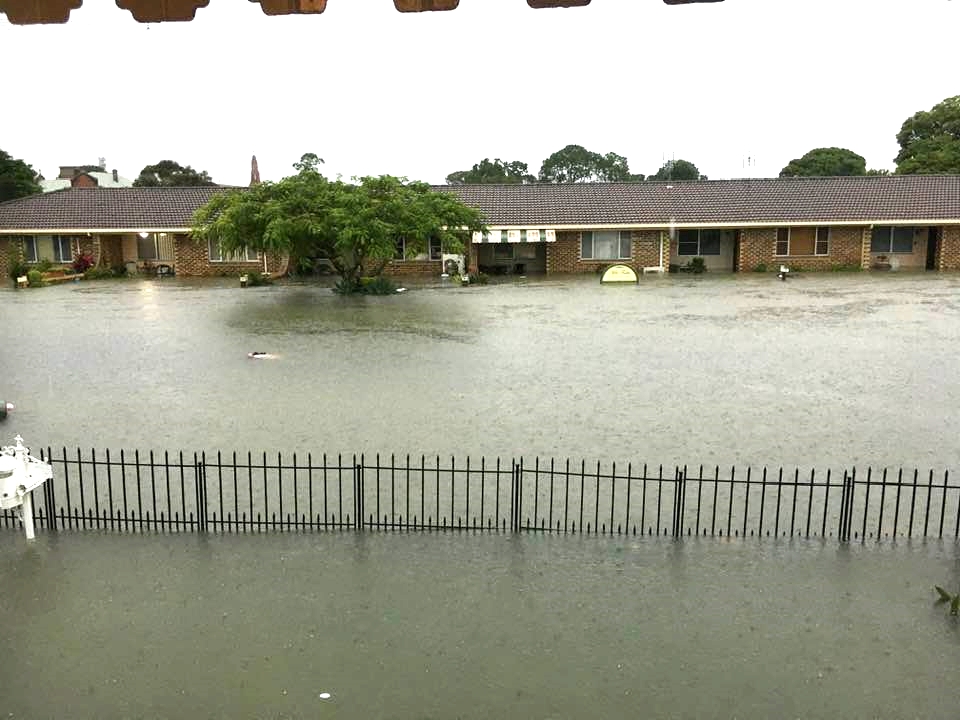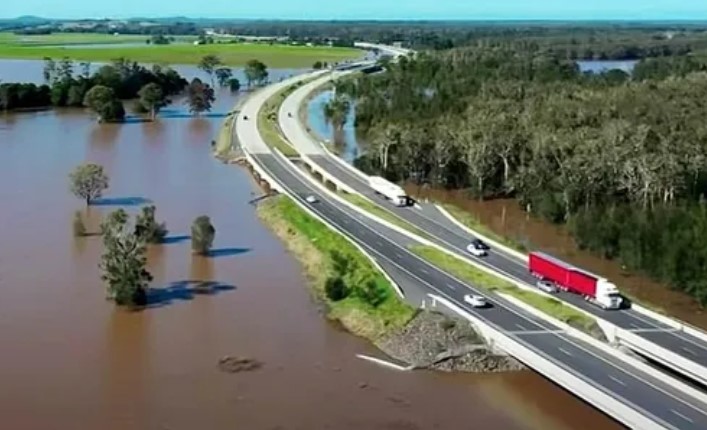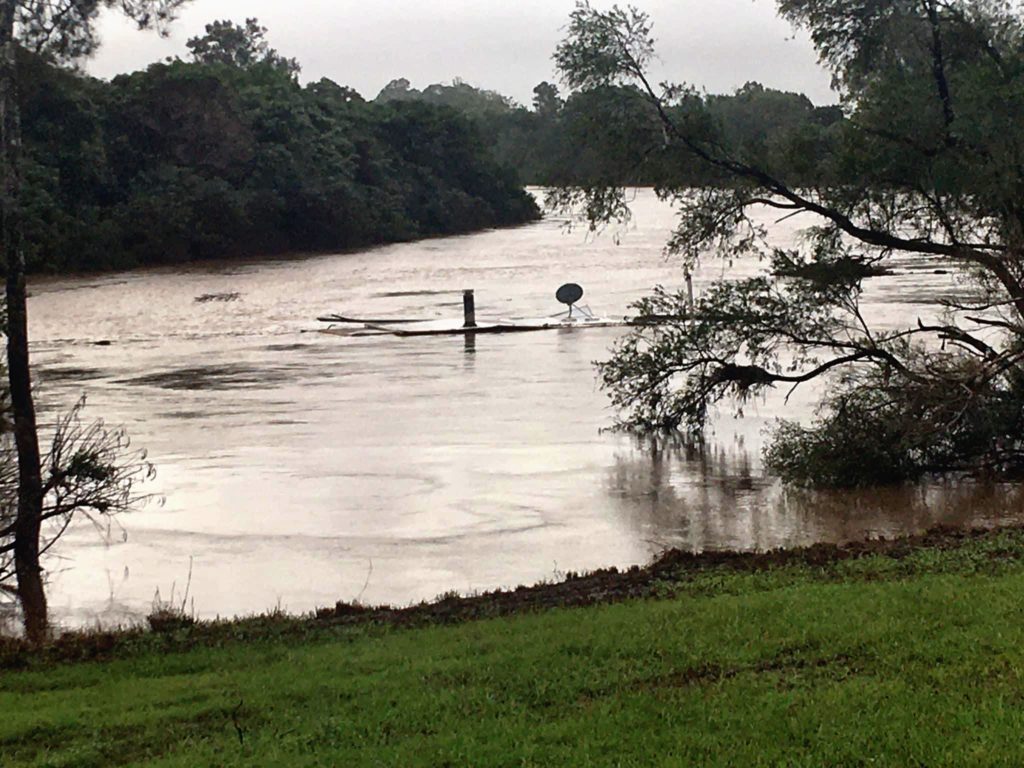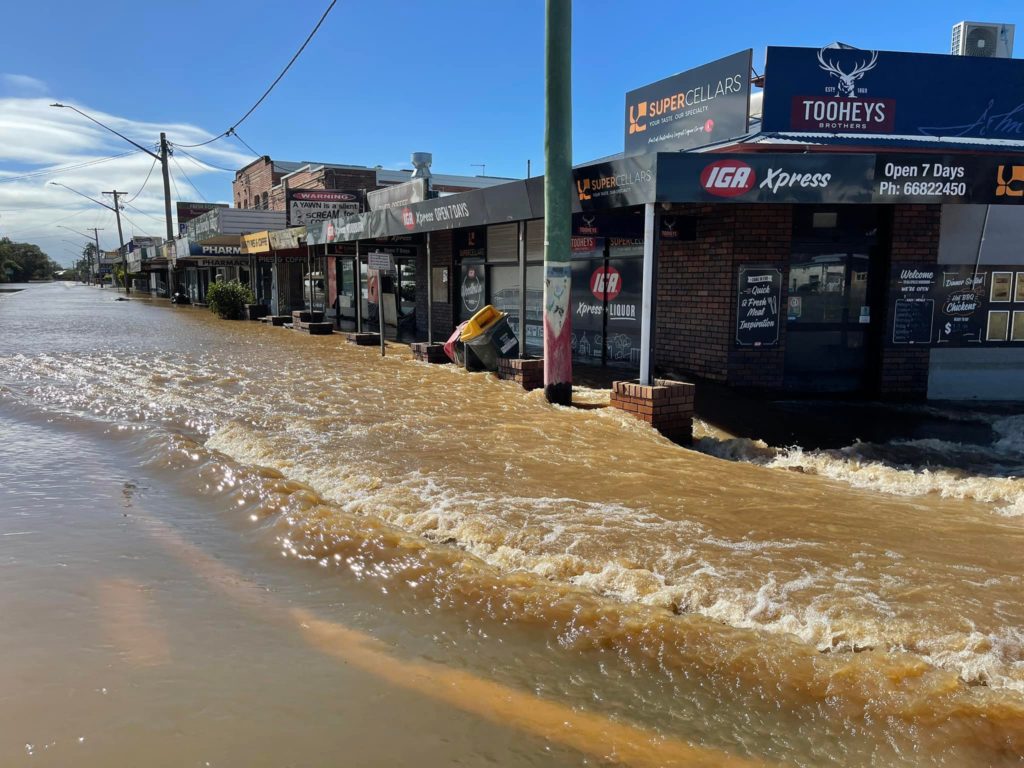ABOVE: Woodburn during the second flood. Photo: Paul Stanley-Jones
Susanna Freymark
The need for a new model for emergency management was clear after the floods in late February-March.
And Richmond Valley Council hasn’t pulled any punches in its 18-page submission to the NSW Flood Inquiry.
Richmond Valley has endured eight natural disasters in three years including fire, flood and drought.
“Regional NSW has reached the limits of its resilience and we can no longer simply expect communities to pick up the pieces after an ever-increasing number of natural disasters,” the submission stated.
“The NSW Government still lacks a clear, decisive and cohesive capacity for emergency response and recovery.”
In the Richmond Valley, 800 homes were badly damaged in the floods, 450 of them currently uninhabitable.
Richmond Valley Council general manager Vaughan Macdonald said there were more than 1000 residents displaced – living with friends and family, shifting between motels and other short-term rentals, or camped out in tents and cars, as the rain continues to fall – all desperately waiting for temporary housing.
The council wants the State Government to establish a permanent State Corporation model to address emergency housing needs following disasters and for processing times and criteria for Back Home assistance grants be urgently reviewed, to help expedite families’ return to their homes.
The emergency response to the flood disaster was left wanting.
“The NSW Government must develop a new, consolidated model for emergency services which combines the key response agencies SES and RFS under one administration,” the submission stated.
“The Government should also consider the best fit and future structure and role of Resilience NSW, as well as reduce the heavy reliance on volunteers to be our frontline responders.”
Here are some of the key issues highlighted in the council’s submission.
Emergency response
“The terrifying hours and days that followed will no doubt be retold in many accounts to the inquiry, but these experiences have clearly highlighted the inherent weaknesses in the NSW disaster response.
Without reliable data and clear information about the potential impacts of an event, people cannot make informed decisions about the risk that it presents to their safety.
Without robust telecommunications systems, people cannot call for help in a crisis and rescuers will not know where they are.
Without response systems that are designed to pre-empt, rather than react, to major events, communities will be left stranded to fend for themselves.
By the time the sheer magnitude of the floods became clear, it was too late for many communities. Volunteers and services who would normally provide front-line rescue and relief operations were isolated by flood waters and unable to reach affected areas. This left communities in the Mid-Richmond area (Coraki, Woodburn, Broadwater and Evans Head) struggling to fill the gap with local volunteers setting up impromptu evacuation centres and rescue operations.”

Potential impacts of the Pacific Highway
“There have been concerns within our community that the recent Pacific Motorway realignment may have influenced the direction of flow and retention of flood waters in the Mid-Richmond area and increased the impact upon homes in Woodburn, Broadwater and Bungawalbin.
While Council is not in a position to offer a technical assessment of these matters, it is important for community confidence that these concerns should be fully explored via an appropriate review of the flood modelling and structural design for the Pacific Motorway upgrade project.
If there are matters that require remediation, they should be addressed as a matter of priority. Only a thorough review of this issue will provide the answers our community needs to have confidence in future flood planning and response.”

Failure of telecommunications
“Regional communities rely heavily on telecommunications services to keep them informed during a disaster and ensure that they receive the help they need from emergency services.
Yet, consistently, these services fail when we need them most. The 2020 NSW Bushfire Inquiry highlighted the significant issues that occurred when telecommunications services and the power supplies that they rely upon failed:
The Inquiry heard from all communities about the problems with communications, power failures and telecommunications outages. Communications often failed at critical moments, leaving people feeling vulnerable and isolated with no means of calling for help, receiving emergency warnings or contacting family and friends. – NSW Bushfire Inquiry 2020
Two years later, the same observation could be repeated, word for word, for the 2022 floods.
Despite the comprehensive recommendations of the Bushfire Inquiry regarding the need to build greater resilience in telecommunications networks and back-up power supply, nothing appears to have been done.
The Northern Rivers floods saw people left stranded on roofs for days, with no access to 000 services to call for help and no information on what was happening around them.
In 21st century Australia, this is simply unacceptable.”

The floods have been costly with more than $150 million in essential council infrastructure repairs and the local economy is expected to cost more than $250 million in productivity over the next two years, due mainly to the impacts on local agriculture and manufacturing industries,” Mr Macdonald said.
“The February and March floods have changed the face of the Northern Rivers and the Richmond Valley.
“Local councils are not sufficiently resourced to meet the extensive costs of disaster response and repairs and we look forward to the inquiry’s findings and recommendations on how we can improve the emergency management model for NSW.”
“Our climate is changing, and the way we prepare for, respond to and recover from future disasters of this scale must also change.”
Read the full submission to the flood inquiry by Richmond Valley Council.




